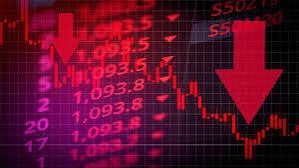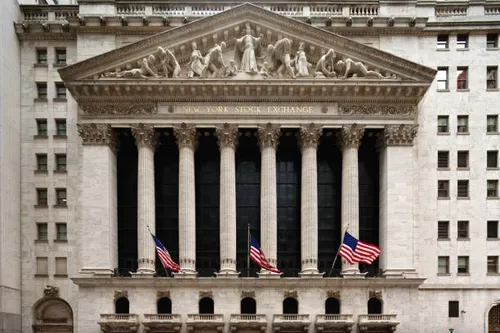Tariffs are economic policy tools employed for all kinds of purposes. They have been used to raise revenue, to shield domestic firms from foreign competition, as a negotiating tactic against other nations, and as a means of imposing economic sanctions. In certain situations, even the threat of tariffs is enough to impel other nations to change course.
But what are tariffs, and how are they determined? In this Explainer, we’ll seek to understand what tariffs are, who gets to set them, and under what conditions. We’ll also dive into some real-world examples of efforts to shape and guide policymakers toward tariffs for some sectors and away from others.
What Are Tariffs and Who Pays Them?
At their base, tariffs are taxes on imported goods. The wording of the definition matters here: they are taxes on imported goods. Since other countries do not import goods into the United States (they export them to the United States) and it is the US citizens who do the actual importing, the legal incidence of tariffs is paid by Americans who are purchasing the foreign-produced goods.
When thinking about imports, most envision what economists refer to as final goods, purchased by an “end consumer.” We might think of iPhones, laptop computers, fully assembled cars, fruits and vegetables, garments, and a litany of other goods. Fewer people realize that the US also imports many “intermediate goods” — such as automotive components, semiconductors, lumber, and fabricated metal parts — that go into the (domestic) production of final goods. We also import raw materials like rare earth minerals, oil/petroleum, iron, aluminum, and such. Tariffs apply to these, too, unless otherwise exempted.
Even though US citizens bear the cost of these tariffs, it is important to distinguish between what we call the legal incidence of a tariff and the economic incidence of a tariff. It is true that US citizens bear 100 percent of the legal incidence of the tariff because we are the ones who must actually send the money to the government. The economic incidence, however, refers to the share of the tax that is paid by the buyers and sellers. Whenever there is a tax, the buyers will pay some portion of it in the form of higher prices. Sellers will also pay some portion of the tax in the form of reduced revenue kept.
For example, in 2009, President Barack Obama imposed a tariff on Chinese tires. The result of this was a 21.7 percent increase in the price of tires in the US, which was less than the tariff rates of 35 percent, 30 percent, and 25 percent. The sellers of the tires made up the difference in the sense that they got to keep fewer dollars after the sale of the tire than they did when there was no tariff.
How Tariffs Are Set: Non-Emergency Situations
Because tariffs are a tax, they are explicitly within the purview of the US Congress, as expressed in Article I, Section 8 of the Constitution, which grants Congress the power to “regulate Commerce with foreign Nations,” and the power to “lay and collect Taxes, Duties, Imposts and Excises.”
This is the constitutional basis by which the House Ways and Means Committee exercises original jurisdiction over tariffs. Here, “original jurisdiction” simply means that all bills pertaining to tariffs must originate in the House Ways and Means Committee. Other Congressional committees can have secondary jurisdiction over a bill dealing with tariffs. A change to the tariff rate on energy imports, for example, would originate in the House Ways and Means Committee but would likely then be referred to the House Committee on Energy and Commerce. The House Parliamentarian, in his advisory role to the House, would assist the Speaker in designating the path a proposed bill would navigate before reaching the floor for a vote.
The Speaker of the House, as the House’s Presiding Officer, has unilateral discretion to accept the House Parliamentarian’s advice or to ignore it. The only exceptions to this lie in situations where the Constitution itself dictates a certain legislative path a bill must traverse. All bills dealing with taxes (and tariffs), for example, must originate in the House Ways and Means Committee. No Speaker can override this rule.
From there, the proposed tariff bill would follow the standard process for any other bill. It must be approved by a majority of the House at which point it goes over to the Senate for approval and, once both Chambers have passed identical versions of the bill, it goes to the President for final approval.
All of this is the standard, or what we may call “normal” or “non-emergency” process, by which tariffs are set or changed.
How Tariffs Are Set: Emergency Situations
Congress was originally constituted as a “deliberative body” and intentionally designed to move slowly (see the Federalist Papers, especially numbers 41-43, 47-49, 51-53, and 62-66). In times of war or crisis, however, action may need to be taken more quickly than Congress can act. For this reason, it turned to the Executive branch. Because the President is elected by the nation as a whole, Congress expected the President could wield the power of tariffs judiciously and, more importantly, expeditiously in situations of genuine emergency.
Congress subsequently passed a series of laws which, under certain conditions, would grant the President “emergency powers” in areas that would typically be within the constitutional purview of Congress. Examples of this include the Trade Act of 1962 (President Donald Trump used Section 232 to impose tariffs in 2018) and Sections 201 and 301 of the Trade Act of 1974 (President George W. Bush relied on Sections 201 and 301 to impose steel tariffs in 2002, and President Obama invoked Section 421 to justify tariffs on Chinese tires). Numerous Supreme Court cases have upheld Congress’s authority to cede some of its power to the President.
Marshall Field & Co. v. Clark, for example, saw the Court uphold the Tariff Act of 1890, which directed the President to suspend duty-free importation of sugar, molasses, coffee, tea, and hides if the President believed that “any country producing and exporting [those products], imposes duties or other exactions upon the agricultural or other products of the United States, which… he may deem to be reciprocally unequal and unreasonable.”
In JW Hampton, Jr & Co. v. United States, the Supreme Court upheld the Tariff Act of 1922, which required the President “to increase or decrease tariff rates as necessary to ‘equalize . . . differences in costs of production’ between articles produced in the United States and ‘like or similar’ articles produced in foreign countries.”
The International Emergency Economic Powers Act
In 1977, Congress passed the International Emergency Economic Powers Act (IEEPA), allowing the President to regulate a wide swath of economic transactions after declaring a state of national emergency. The IEEPA was an offshoot of the 1917 Trading with the Enemy Act, which gave the President the power to impose economic sanctions on enemy nations during wartime.
As the Congressional Research Service notes, the IEEPA gives the President the authority to “‘regulate’ a variety of international economic transactions, including imports. Whether ‘regulate’ includes the power to impose a tariff, and the scale and scope of what tariffs might be authorized under the statute, are open questions as no President has previously used IEEPA to impose tariffs,” (emphasis added). The report is quick to point out that President Richard Nixon used the Trading with the Enemy Act “to impose a 10 percent tariff on all imports into the United States in response to a monetary crisis,” which does engender some amount of a precedent for this type of activity.
Declaring a national emergency is straightforward. Between 1917 and 2025, a total of 90 national emergencies were declared, an average of once every 14 months. The National Emergencies Act (1976) requires that the President articulate that there exists an unusual and extraordinary threat, that he or she notify Congress immediately, and publish such a declaration in the Federal Register. Once that is done, a national emergency is officially declared and the authorities and powers of the IEEPA are “unlocked.” Dozens of these emergencies are still in effect today, with some dating back decades.
While scholars have contended that giving power over tariffs in situations of a national emergency has effectively nullified “the distinction between Congress’s constitutional power over tariffs and foreign commerce and the President’s national security and foreign affairs powers,” courts have traditionally sided with the President.
In Al Haramain Islamic Foundation, Inc v. US Dept of Treasury, the Court of Appeals for the Ninth Circuit said that they “owe unique deference to the executive branch’s determination that we face ‘an unusual and extraordinary threat to the national security’ of the United States.” In US v Groos, the Court of Appeals for the Tenth Circuit wrote that justices “cannot question the President’s political decision to deem this threat ‘unusual and extraordinary.’”
What these court cases establish is that 1) Congress has the power to delegate its authority to the President and that 2) the President is uniquely situated to understand whether a situation qualifies as a “national emergency.” Part of this is no doubt due to the simple fact that the President (presumably) has access to information that is privileged that the Court does not have. Because of that, the judicial branch trusts that Presidents will not abuse the IEEPA for political or procedural reasons. Another explanatory element, though, may be the Court’s hesitation to open Pandora’s box by hearing a challenge to a national emergency declaration. Once that box is open, the intent of the IEEPA would be effectively nullified as courts deliberate.
Beyond Procedure: How the Tariff Sausage Is Made
While this procedural explanation covers how a new tariff can be enacted, we must also consider where the idea for a new tariff comes from and what factors shape tariffs that are ultimately enacted.
Protected industries often gain from tariffs, which make the products and services of their foreign competitors more expensive, so industry actors will actively lobby policymakers to secure these powerful political favors. Requests for tariffs will often be couched in terms of “protecting critical industries,” or “necessary for national security,” and other such language. And while there is likely some degree of sincerity behind these statements, it would be foolish to assume that failing to tariff-protect every industry would result in the United States being unable to defend itself militarily.
Fortunately, policymakers actively soliciting cash payments in exchange for political outcomes is illegal in the United States. Directly bribing policymakers is similarly illegal under the Federal Election Campaign Act. Further, there are strict rules governing gifts for policymakers, making it difficult to blatantly offer a quid pro quo.
Less blatant corruption, however, is common. Promising campaign contributions, pledging endorsements or help with re-election, or casually mentioning that you might know of some highly-paid opportunities for a Congressperson after they leave office are not illegal activities. Savvy lobbying firms (and policymakers) can and often do find creative ways of arranging a sort of quid pro quo arrangement, regardless of stringent laws intended to prevent them.
Sugar tariffs, for example, protect domestic sugar producers by restricting imports and setting price floors, keeping US sugar prices artificially high — often double the world price. A small group of politically connected sugar growers and processors lobbies to maintain these tariffs. The result is a classic case of protectionist rent-seeking: concentrated gains for a few, who have not generated any additional value, and spread-out costs for many (including consumers and candy manufacturers).
Understanding Tariffs
The process of setting tariffs reflects a delicate balance of constitutional authority, wherein Congress holds unambiguous jurisdiction, and presidential powers during national emergencies and in his dealings with matters of foreign affairs. Examples such as the Obama tire tariffs through the use of the Trade Act of 1974 to Trump’s use of the Trade Act of 1962 to impose tariffs on steel and aluminum evidence how these emergency powers have been used by presidents in the past. Finally, acknowledging the role that lobbyists and special interest groups play in influencing and shaping tariff policy helps us understand the dynamics at play across both industry and government.
Understanding the procedural dynamics at play across the legislative branch, the executive branch, and industry equips both policymakers and citizens alike with the ability to critically examine tariffs in a way that not only allows for better, more informed discussions but also helps us keep the federal government in check.
Understanding how tariffs are created, by whom, and for what purposes (both rhetorical and actual) is crucial to understanding their economic impact and political importance.
Anurag Dhole is a seasoned journalist and content writer with a passion for delivering timely, accurate, and engaging stories. With over 8 years of experience in digital media, she covers a wide range of topics—from breaking news and politics to business insights and cultural trends. Jane's writing style blends clarity with depth, aiming to inform and inspire readers in a fast-paced media landscape. When she’s not chasing stories, she’s likely reading investigative features or exploring local cafés for her next writing spot.






